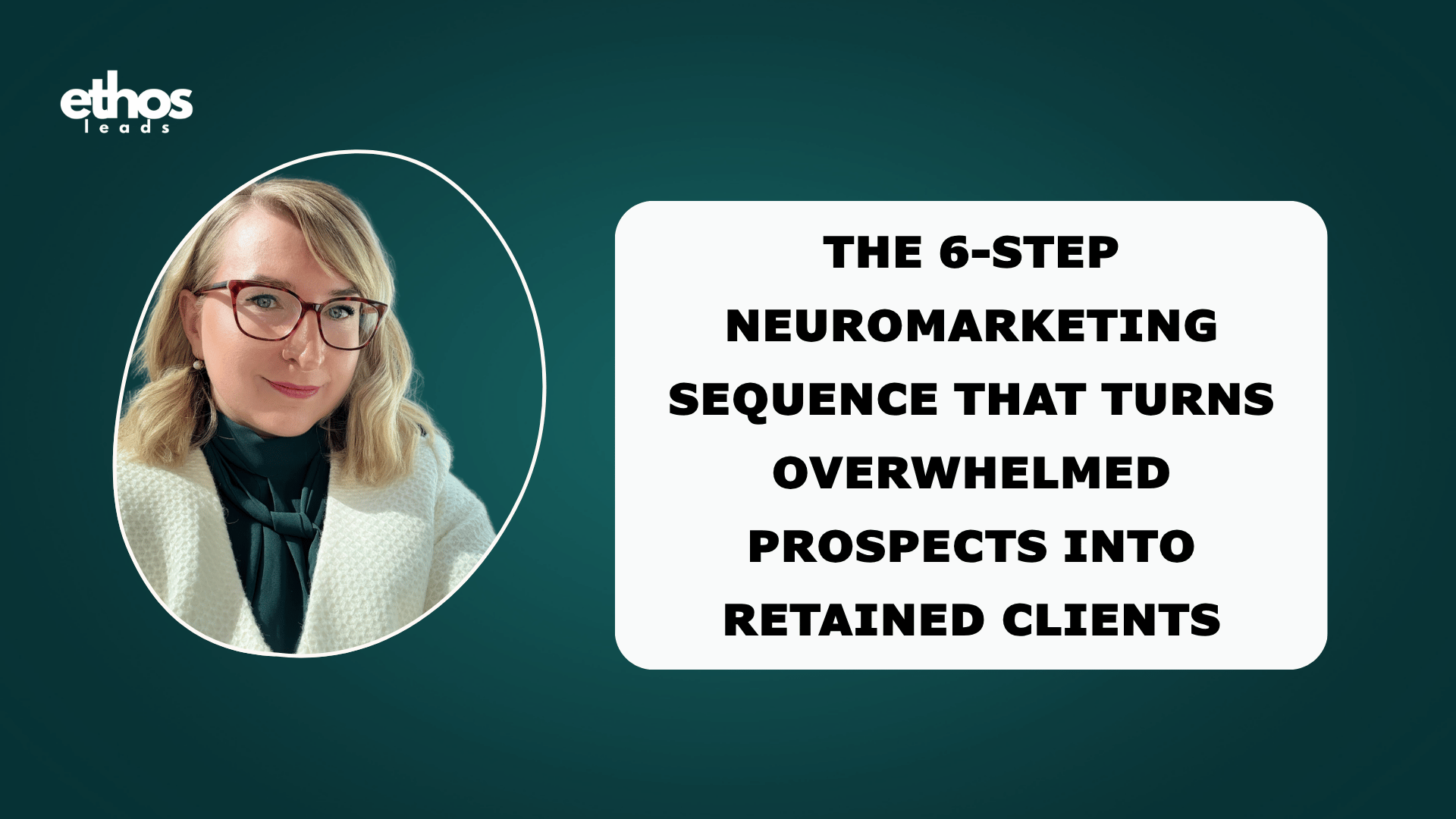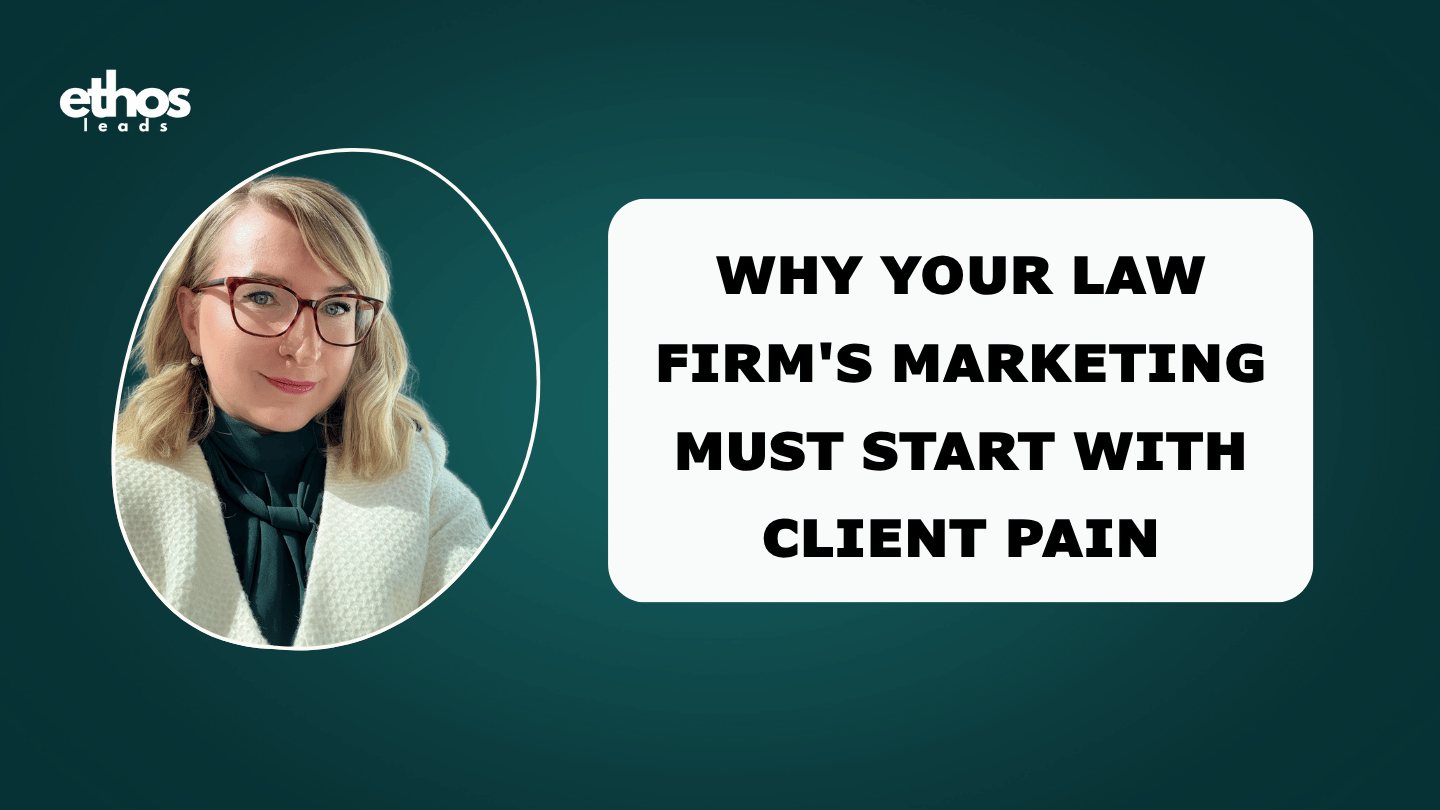Paid Advertising for Lawyers: Reaching Clients at Every Stage of Their Legal Journey
- Ads
- 12 mins
Why User Intent Matters for Lawyers
Imagine this: a potential client with a legal issue searches online. They type in their concerns, hoping to find a lawyer who can help. This is the essence of user intent—understanding the why behind the search and the problem the user is trying to solve.
As a lawyer, leveraging paid advertising is a powerful way to reach these users and guide them through their legal journey. By aligning your campaigns with user intent, you can attract the right prospects, nurture them into clients, and drive growth for your practice.
Think of user intent as a bridge connecting potential clients with the legal expertise they need. Here's how understanding it benefits your practice:
- Attract the Right Clients: Imagine a user searching for "DUI defense attorney near me." Generic legal content won't cut it. By targeting that specific intent, you attract qualified leads genuinely interested in your services.
- Boost Credibility and Trust: When your website addresses a user's exact concerns, you establish yourself as a knowledgeable and reliable authority in their eyes.
- Increase Conversions: Content tailored to user intent is far more engaging, leading website visitors to contact you for consultations or take other desired actions.
Understanding the Legal Client Journey
The journey of a person facing a legal issue can be broken down into three distinct stages:
1) Awareness Stage:
At the Awareness Stage, potential clients are just beginning to recognize they have a legal issue and are seeking general information to better understand their situation.
They recognize they have a problem but lack clarity on its legal implications. They might search for broad terms like "car accident attorney" or "contract dispute."
This stage is fueled by informational intent.
2) Consideration Stage:
As prospects move to the Consideration Stage, they have a better understanding of their legal situation and are actively researching potential solutions.
They understand the legal nature of their issue and are actively researching potential solutions. Searches become more specific, like "best personal injury lawyer near me" or "employment law firms specializing in discrimination."
This phase is driven by commercial investigation intent.
3) Decision Stage:
At the Decision Stage, users have narrowed down their options and are ready to choose a lawyer or firm.
Reviews, testimonials, and detailed practice area information become crucial.
This stage is characterized by transactional intent.
By understanding these stages and aligning your content with the corresponding user intent, you can effectively guide potential clients through their legal journey and position your firm as the trusted solution provider.
Paid Advertising Strategies Based on User Intent
Paid advertising can be a powerful tool for lawyers to connect with these potential clients at every stage of their legal journey.
Aligning your paid advertising campaigns with the specific user intent at each stage of the customer journey is crucial for maximizing the effectiveness and return on investment (ROI) of your marketing efforts.
By tailoring your ad messaging, targeting, and landing page experiences to match the user's intent, you can significantly improve engagement, click-through rates (CTR), and conversion rates.
1) Awareness Stage (Informational Intent):
- Goal: Educate potential clients about their legal issues and establish yourself as a knowledgeable resource.
- Challenges: Users are broad in their search terms and may not be ready to commit to a specific lawyer yet.
To effectively reach this audience, your paid ads should:
- Use broad, informational keywords: Target keywords like "car accident attorney" or "divorce lawyer" that align with the user's initial, broad search queries.
- Provide educational content: Craft ad copy that offers helpful resources, such as blog posts, guides, or FAQs, to address the user's informational needs and establish your firm as a knowledgeable authority.
- Build brand awareness: Highlight the firm's experience, credentials, and track record to build trust and credibility with potential clients in this early stage.
Example Ad Campaign:
- Ad Copy: "Need Help Understanding Your Legal Rights? Download Our Free Guide!"
- Landing Page: A page offering a free downloadable guide on a relevant legal topic (e.g., "Understanding Your Rights After a Car Accident").
- Call-to-Action: "Download Now for Free"
- Content Offer: Provide valuable information such as blog posts, FAQs, or explainer videos.
2) Consideration Stage (Commercial Investigation Intent)
- Goal: Nurture leads who understand their legal needs and are actively researching potential solutions.
- Challenges: Users are more specific in their searches but may still be considering multiple lawyers.
To effectively engage this audience, your paid ads should:
- Use more specific, solution-oriented keywords: Target keywords like "top personal injury law firms near me" or "employment discrimination attorneys" that reflect the user's more focused search intent.
- Show your unique value proposition: Highlight what sets your firm apart from competitors, such as your approach, success rates, or client testimonials, to differentiate yourself and demonstrate your ability to provide an effective solution.
- Offer consultations or evaluations: Promote free consultations, case evaluations, or other low-commitment offers that allow potential clients to explore your services further without fully committing.
Example Ad Campaign:
- Ad Copy: "Looking for a Trusted Personal Injury Lawyer? Read Our Client Success Stories!"
- Landing Page: A page featuring detailed case studies and client testimonials.
- Call-to-Action: "Read Our Success Stories"
- Content Offer: In-depth articles, client testimonials, and video case studies.
3) Decision Stage (Transactional Intent)
- Goal: Convert website visitors into paying clients who are ready to take action.
- Challenges: Users are in the final stages of choosing a lawyer and may be comparing options.
To effectively convert this audience, your paid ads should:
- Use highly specific, transactional keywords: Target keywords like "hire personal injury lawyer [city]" or "employment discrimination attorney [location]" that indicate the user's intent to take action.
- Highlight your credentials and reviews: Prominently feature your firm's credentials, awards, and positive client reviews or testimonials to reinforce your credibility and expertise, helping potential clients feel confident in their decision.
- Provide clear calls-to-action: Include direct calls-to-action, such as "Schedule a Consultation" or "Contact Us Today," to make it easy for potential clients to take the next step and engage your firm.
Example Ad Campaign:
- Ad Copy: "Schedule Your Free Consultation with a Top-Rated Lawyer Today!"
- Landing Page: A page optimized for conversions with a clear call-to-action to schedule a free consultation.
- Call-to-Action: "Schedule Now"
- Content Offer: Limited-time offers, downloadable resources like legal checklists, and easy-to-complete contact forms.
By aligning your paid ad messaging and targeting with the specific user intent at each stage of the legal client journey, you can effectively guide potential clients through the sales funnel, from initial awareness to final decision. This strategic approach ensures that your advertising efforts resonate with your target audience, increasing the likelihood of conversions and maximizing the ROI of your paid advertising campaigns.
The Science of Persuasion: Leveraging Principles for Success
To make your paid advertising campaigns even more effective, incorporate the principles of persuasion outlined in Robert Cialdini's "Influence" and Jonah Berger's "Contagious":
- Reciprocity: Offer free resources (e.g., legal guides, checklists) to build goodwill and make potential clients more receptive to your services.
- Social Proof: Highlight positive reviews, testimonials, and case studies to leverage the power of social proof and build trust.
- Authority: Showcase your firm's expertise through thought leadership content, industry awards, and professional accreditations.
- Scarcity: Create a sense of urgency with limited-time offers or discounts, tapping into the fear of missing out.
- Emotion: Craft compelling ad copy and visuals that evoke emotions like relief, hope, or empowerment, increasing the likelihood of engagement.
- Storytelling: Use client success stories and real-life examples to illustrate the positive impact of your legal services.
By combining targeted paid advertising strategies with principles of persuasion, you can create campaigns that resonate with potential clients, effectively guiding them through their legal journey and driving growth for your firm.
The key to successful paid advertising for lawyers is understanding user intent and tailoring your campaigns accordingly. By providing the right information at the right time, you can attract high-quality leads, build trust, and ultimately convert prospects into loyal clients.
Measure the Effectiveness of Your Paid Ad Campaigns Based on User Intent
To measure the effectiveness of your PPC campaigns based on user intent, you can analyze and track several key metrics that align with the different stages of the user journey. Here are some strategies:
Awareness Stage (Informational Intent)
At this stage, users are seeking general information and education. Relevant metrics include:
- Click-Through Rate (CTR): A high CTR indicates your ads are resonating with users in the awareness stage and piquing their interest to learn more.
- Time on Site: Track how long users spend engaging with your educational content like blog posts or guides. More time spent signals effective awareness-building.
- Video Views: If using video ads, monitor view rates and completions as an indicator of capturing user attention during the awareness phase.
Consideration Stage (Commercial Investigation Intent)
Users are now researching and evaluating potential solutions. Key metrics include:
- Conversion Rate: Track form fills, calls, or other lead generation metrics to gauge how effectively your ads are driving commercial investigations.
- Cost per Lead: Analyze the cost of acquiring leads at this stage to optimize your bidding strategy for commercial investigation keywords.
- Assisted Conversions: Use tools like Google Analytics to identify how your consideration-stage ads contribute to eventual conversions down the funnel.
Decision Stage (Transactional Intent)
At this point, users are ready to make a purchase or take a transactional action. Focus on:
- Conversion Rate: The conversion rate for transactional keywords indicates how well your ads are driving desired actions like sales or sign-ups.
- Cost per Acquisition (CPA): Monitor your CPA to ensure you're acquiring customers/clients profitably from transactional PPC campaigns.
- Return on Ad Spend (ROAS): Calculate your ROAS to evaluate the overall profitability and effectiveness of your transactional PPC efforts.
By tracking these intent-aligned metrics across the user journey, you can optimize your PPC campaigns to better resonate with users at each stage, driving more effective awareness, consideration, and conversions
Optimize Your Paid Ad Campaigns Based on User Intent
To optimize your PPC campaigns based on user intent, you should focus on the following key metrics:
- Click-Through Rate (CTR)
CTR indicates how well your ads are resonating with users based on their intent.
A high CTR for informational intent keywords suggests your ad copy is effectively addressing users' need for information.
For commercial investigation intent, a strong CTR signals your value propositions are appealing to researchers.
And for transactional intent, a high CTR means your ads are compelling to users ready to convert.
- Conversion Rate
Track conversion rates segmented by user intent categories.
For informational intent, conversions could be content downloads, newsletter signups, etc.
For commercial investigation, conversions are typically lead generation forms or consultation requests.
And for transactional intent, focus on sales/purchase conversions.
- Cost per Acquisition (CPA)
Analyze your CPA for each intent stage.
This metric reveals how cost-effectively you're acquiring customers at the transactional stage and leads at the commercial investigation stage.
Optimize campaigns with high CPAs for those intent categories.
- Return on Ad Spend (ROAS)
Calculate ROAS separately for each user intent bucket to understand the profitability and return from your advertising investment at each stage of the funnel.
This allows you to double down on the highest-performing intent categories.
- Assisted Conversions
Use tools like Google Analytics to identify how your awareness and consideration stage ads contribute to eventual conversions, even if they didn't directly drive the final transaction.
By closely monitoring these intent-aligned metrics, you can gain insights into how effectively your campaigns are resonating and performing for users at different stages of the buyer's journey. Use this data to optimize your targeting, messaging, landing pages and overall PPC strategy based on user intent
Adjust Your Ad Spend Based on Different User Intents
To adjust your ad spend based on different user intents, you can follow these strategies:
- Segment Campaigns by User Intent. Create separate campaigns or ad groups for each user intent category - informational, commercial investigation, and transactional. This allows you to analyze performance metrics and allocate budgets accordingly.
- Adjust Bids Based on Intent. For informational intent keywords, you can set lower bids as these users are still in the awareness stage. For commercial investigation keywords, increase bids to capture users actively researching solutions. And for transactional intent keywords, set the highest bids to prioritize users ready to convert.
- Optimize Ad Copy and Landing Pages. Tailor your ad copy and post-click landing page experiences to align with the specific user intent. For informational queries, provide educational content. For commercial investigation, highlight unique value propositions. And for transactional intent, include clear calls-to-action and conversion opportunities.
- Monitor Intent-Specific Metrics. Track metrics like click-through rate (CTR), conversion rate, cost per acquisition (CPA), and return on ad spend (ROAS) segmented by user intent. This data will reveal which intent categories are most cost-effective, allowing you to reallocate budgets accordingly.
- Leverage Audience Targeting. Utilize audience targeting options like in-market audiences, custom intent audiences, and remarketing lists to reach users based on their specific interests and intent signals. This ensures your ads are shown to the most relevant users at each stage.
- Continuously Test and Optimize. Regularly analyze performance data, test new ad variations and landing page experiences, and refine your bidding strategies for each user intent category. This iterative process will help you continuously improve the efficiency of your ad spend allocation.
By segmenting your campaigns based on user intent, tailoring your messaging and experiences, monitoring intent-specific metrics, and leveraging audience targeting, you can effectively adjust your ad spend to prioritize the highest-performing intent categories and maximize your return on investment.
Calculate the Return on Ad Spend for Different User Intents
To calculate the return on ad spend (ROAS) for different user intents, you'll need to segment your advertising data based on the intent signals present in the keywords and ad campaigns. Here's how you can approach it:
- Categorize Keywords by User Intent
Analyze your keyword data and categorize the keywords into informational, commercial investigation, and transactional intent buckets.
- Set Up Separate Campaigns or Ad Groups
Create separate campaigns or ad groups in your advertising platforms (Google Ads, LinkedIn Ads, Facebook Ads, etc.) for each user intent category. This will allow you to track performance metrics and costs separately.
- Track Revenue from Each Intent Category
Ensure you have conversion tracking and revenue attribution set up correctly in your advertising platforms. This will allow you to see the revenue generated from each intent-based campaign or ad group.
- Calculate ROAS for Each Intent Category
For each intent category, use the ROAS formula:
ROAS = Revenue / Advertising Cost
Revenue = Total revenue generated from that intent category's campaigns
Advertising Cost = Total ad spend for that intent category's campaigns
For example, for the Transactional Intent category:
ROAS = $25,000 (revenue) / $5,000 (ad spend) = 5
This means for every $1 spent on transactional intent ads, you generated $5 in revenue.
- Analyze and Optimize
Compare the ROAS across the different intent categories to understand which stage of the buyer's journey is performing best. Use these insights to optimize your bidding strategies, ad copy, landing pages, and overall budget allocation for each intent stage.
By calculating ROAS specific to each user intent, you can better understand the profitability and effectiveness of your advertising efforts at each stage of the legal client journey. This data-driven approach allows you to make informed decisions to improve your overall paid advertising ROI.
So, by understanding user intent and implementing these targeted paid advertising strategies, you can attract high-quality leads, nurture them through the consideration process, and convert them into paying clients.
Related articles:
Paid Advertising Strategies for Informational Intent: Capture Clients Seeking Legal Information
Paid Advertising Strategies for Commercial Investigation Intent: Capture Clients Considering Legal Solutions
Paid Advertising Strategies for Transactional Intent: Capture Legal Leads Ready to Convert




